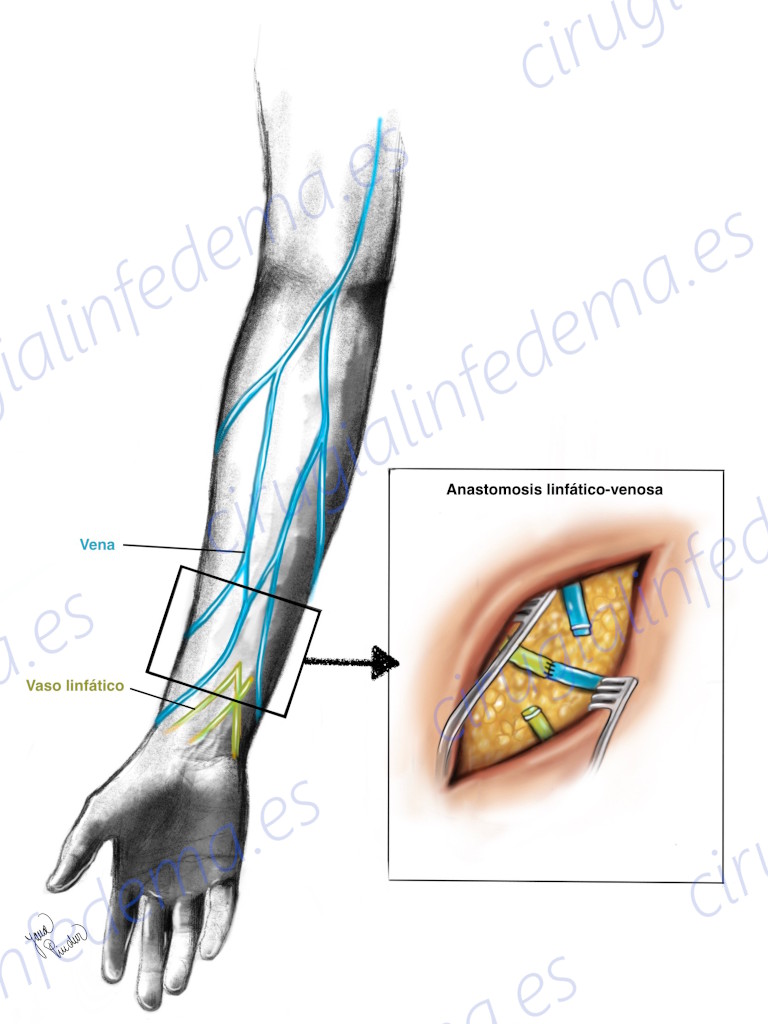Lymphedema and Lymphovenous Anastomosis: questions
Surgical techniques for lymphedema (Lymphovenous Anastomosis) have progressed considerably in recent years. The goal of these procedures is to improve lymphedema, even if it cannot be cured. You can get more information in English here.

- How long does the surgery take?
It depends on the number of lymphatic anastomoses that we are able to perform. In general, we can perform between 2 to 4 anastomoses, which means an average duration of 3 hours.
2. How many days do I have to be admitted to the hospital?
Generally our patients go home the same day of surgery.
3. When can I start with the compression garments and lymphatic massage?
After 4 weeks, you can start physical activities, lymphatic drainage massages and the use of compression garments. It is important to keep the surgical wounds clean and dry to avoid infection.
4. What are the most common complications of surgery?
Complications after performing this intervention are rare. The incisions are subcutaneous (very superficial), so there is NO expose of large nerves, blood vessels or tendons.
5. Am I a good candidate for this type of surgery?
The milder stages of lymphedema respond better to this surgery. However, each case must be studied individually by an expert in lymphedema surgery.
6. Can I undergo another type of surgery after Lymphatic-Venous Anastomosis surgery?
Yes. If the lymphatic-venous anastomosis surgery does not achieve the expected result, another type of lymphedema surgery can be considered, such as lymph node transplantation or liposuction of the affected limb.
7. I have had a lymph node transplant. Can I undergo Lymphatic-Venous Anastomosis surgery?
Yes. Lymph node transplant surgery is NOT a contraindication. However, it requires a detailed study mainly with indocyanine green techniques.
